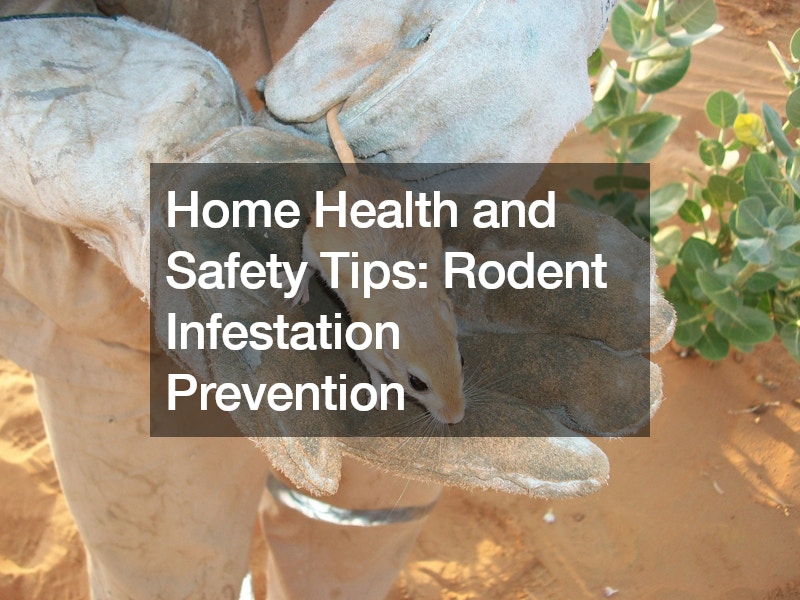While some people may love rodents and similar animals as pets, no one wants an infestation of wild critters in their house. Some of them may look cute, but people have had to call for squirrel removals when the situation got out of control. Therefore, you must follow several health and safety tips to ensure your home doesn’t face any issues.
Most animals like squirrels are also rodents, although the mainstream media hasn’t vilified them as much as rats and mice. You need to know that these creatures can still get into your food and infect it, but they can also mess with electrical wiring and cause structural damage. They’re wild animals, but there are easy ways to prevent their presence in your home. Houses surrounded by nature are particularly susceptible to rodents, so you can start by calling rat-proofing services.
Rodent proofing services may be similar, but they should work for animals similar to squirrels. They’ll inspect your house for possible entry points and recommend sealing cracks, holes, and gaps. They could also suggest changing your food storage practices to sealed bins, drawers, and pantries. Prevention is key because you don’t want to call an extermination service. Let’s find out more.
The Incidence of Rodents In America
Pestworld, an information repository of the US National Pest Management Association (NPMA), noted that 29% of Americans have a rodent problem at home. Some may think that they’re just common pests that are merely unsightly and ruin furniture or eat food stored away in cabinets and shelves. Unfortunately, it’s not as simple as that.
Impact of Rodents to Humans
According to the Centers for Disease Control (CDC), rodents spread over 35 diseases through contact with the rodent’s feces, urine, saliva, as well as through bites. And it doesn’t just stop there; these diseases can be spread to humans through ticks, fleas, and mites that have gorged themselves on the infected rodent. Some of these diseases are leptospirosis, rat-bite fever, tularemia, Hantavirus Pulmonary Syndrome, and hemorrhagic fever with renal syndrome, to name a few. That said, it’s vital to rat-proof your home not only to protect your food and furniture but, more importantly, to ensure the safety and wellbeing of those in your home.
The CDC’s Three-Part Prevention
 According to the CDC, there are three steps towards preventing rodent infestations at home: “Seal Up! Trap Up! Clean Up!”
According to the CDC, there are three steps towards preventing rodent infestations at home: “Seal Up! Trap Up! Clean Up!”
Seal Up. If you see a small hole through around your home’s exterior and interior walls, you’d probably think that a rat wouldn’t get through that. However, mice can squeeze through a hole as small as a nickel, while rats can enter a hole the size of a half-dollar (50-cent coin). That said, you must look around and seal any gaps in and outside your home, such as in the kitchen, cabinets, vents, walls, pipes, doors, and attics. Do a full-sweep and seal up any potential rodent entry points you can find.
Trap Up. There are a plethora of rat traps available on the market, all of which can help reduce the rodent population in your home. The CDC doesn’t recommend glue or live traps as they often end up scaring rodents and cause them to urinate and spread germs and diseases. Instead, use snap-traps with bait (such as peanut butter) to help you catch rats. It’s also vital that you dispose of the rats that are caught in your traps properly. If you’re unsure of how to go about with traps and the disposal of the rodents, it would be best to give a call to your local exterminator in Chesapeake, VA to do it for you.
Clean Up. Food scraps and unprotected food items are a potential target for rodents. By cleaning up and properly storing your food items at home, you cut off the rodents’ food source and nesting sites. When throwing away food waste, you must use rodent-proof containers, as well as to clean the containers to avoid attracting rats and other pests. You should also regularly dispose of garbage and minimize the clutter at home. That said, hay, woodpiles, and garbage cans are potential nesting sites, so make sure that they’re stored a foot off the ground and have woodpiles stored as far away from the house as possible as they are a common nesting ground for rodents (and also termites).
Call in the Professionals
If the rodent sightings become more and more common, you may want to consider contacting your local accredited exterminator in Chesapeake, VA to help you get rid of the rodent infestation and also assist you in rodent and pest-proofing your home.
Conclusion
There’s no question that a rodent infestation can have dire consequences to your home, furniture, and your family’s health. As such, it’s essential to heed the tips and warnings of the CDC to address the rodent problem in your home and make it a rodent-free and rodent-proof haven, and never hesitate to hire professional exterminators if the problem persists.


